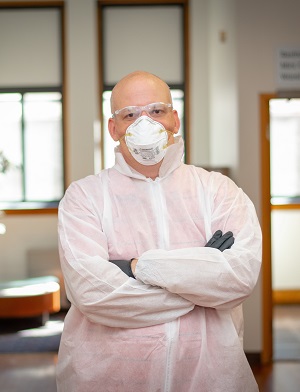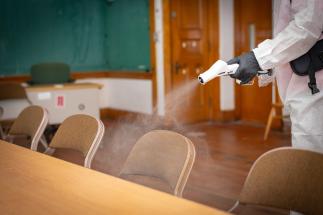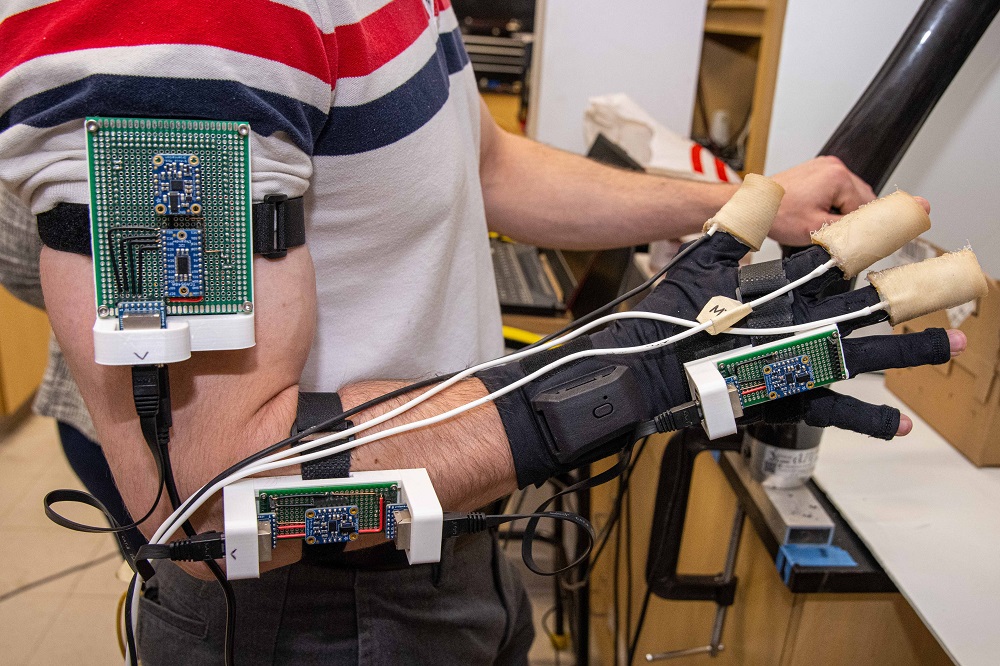If you see people in full hazmat gear on campus this fall, don’t worry. Custodial staff, crews from the Facilities Office and the Office of Environmental Health & Safety (EHS), and others have been suiting up in personal protective equipment to disinfect spaces under new protocols aimed at mitigating the spread of COVID-19.
Workers will be visible across campus in everything from gloves and surgical masks for simple tasks, such as cleaning offices, to coveralls, booties, and N95 respirators for deep cleaning, says Daniel Sarachick, director of EHS.

“As always, we match our equipment to the level of cleaning we need to do in a specific room, building, or space,” Sarachick says. “Much of the time, crews will be wearing gloves and masks, but they may wear more protective gear when deep cleaning an enclosed space. We don’t want anyone to worry if they see crews in coveralls and respirators. It may simply mean that they’re doing routine deep cleaning in a room.”
WPI is using three approaches to clean and disinfect spaces, says Tim Reilly, assistant director of facilities.
- Individual Action—Students, faculty, and staff will use cleaning and disinfecting supplies placed throughout buildings to wipe their desks, tables, and other areas before and after use.
- Routine Enhanced Cleaning—Facilities crews in uniforms, gloves, disposable surgical masks, and safety glasses will do routine cleaning while also wiping frequently touched surfaces with disinfectant. At night, crews will fog areas with a strong but safe disinfecting mist that settles on surfaces.
- Deep Cleaning—A small team of EHS workers and trained custodial staff will respond to a building for a top-to-bottom disinfecting job when a member of the WPI community tests positive for COVID-19. These workers will wear protective equipment such as disposable coveralls, goggles or safety glasses, a respirator, gloves, and disposable booties. In addition to fogging and wiping surfaces, the deep cleaning team will concentrate on areas such as an employee’s work area, a student’s desk, and bathrooms. A building or room may be closed for a period of time for deep cleaning.
For all cleaning, crews use safe, hospital-grade disinfectants. The deep cleaning team will primarily wipe surfaces with a solution that is 70% isopropyl alcohol.
Reilly says it’s important to know that deep cleaning does not necessarily remove every speck of dust from a room.
“Deep cleaning is not vacuuming or dusting away cobwebs,” he says. “Our goal is to sanitize.”
- Lisa Eckelbecker




